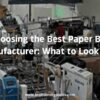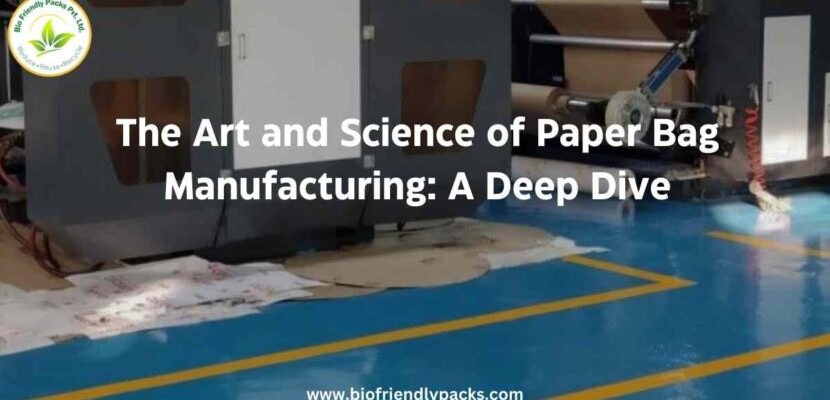Paper bags, often overlooked in their simplicity, are a marvel of modern manufacturing. They are ubiquitous, yet their creation involves a delicate balance of artistry and scientific precision. In this blog, we will explore the intricate process behind paper bag manufacturing, from the raw materials to the finished product, and delve into the environmental impact and future innovations in this industry.
Raw Materials: The journey of a paper bag begins with the selection of raw materials. Typically, paper bags are made from kraft paper, a sturdy and eco-friendly material derived from wood pulp. The pulp is processed and refined, then mixed with water to form a slurry. This slurry is then spread onto a moving mesh screen, where the water is drained away, and the fibers begin to bond together to form a sheet of paper.

Manufacturing Process: Once the paper is formed, it undergoes a series of processes to become a usable paper bag. The sheet of paper is fed into a machine that cuts it into the desired shape and size. The edges are then folded and glued to create the basic structure of the bag. Handles, if required, are attached using a similar process.

Environmental Impact: One of the key advantages of paper bags is their eco-friendliness. Unlike plastic bags, which can take hundreds of years to decompose, paper bags are biodegradable and can be recycled. However, the production of paper bags still has environmental impacts, such as deforestation and water usage. Manufacturers are increasingly turning to sustainable practices, such as using recycled paper and minimizing waste, to reduce these impacts.
Future Innovations: As consumer demand for sustainable packaging grows, the paper bag industry is evolving to meet these needs. Innovations such as water-based adhesives, bio-based coatings, and advanced recycling technologies are being developed to make paper bags even more environmentally friendly. Additionally, advancements in printing technology are allowing for more intricate and customizable designs, making paper bags not just functional, but also a form of advertising.
Conclusion: The art and science of paper bag manufacturing is a testament to human ingenuity and our ability to find creative solutions to complex problems. While paper bags may seem like a simple product, their production involves a sophisticated process that blends artistry with scientific precision. As we look to the future, it is clear that the paper bag industry will continue to evolve, driven by a commitment to sustainability and innovation.





